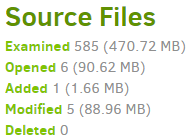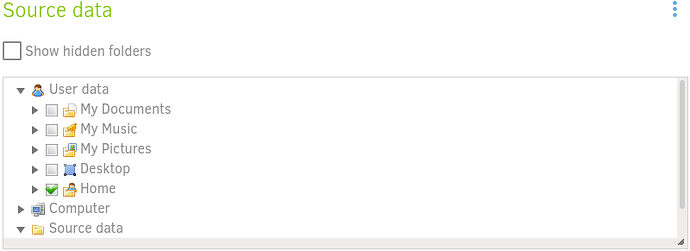2.0.6.1_beta_2021-05-03
Instead of posting a bunch of issues out of annoyance in git will try this first this time around… Duplicati is just unusable outside of development…
1. [SOLVED] Source becomes incorrect with imported backup configurations
EDIT:
SOLUTION… The following that the exported backup config.json has in it produces this problem:
“Sources”: [
“%HOME%”
]
And needs to be full paths to work correctly. At this time all previous backup configs with the above are broken! This is an export from 2.0.0.7. Users with encrypted backup configs where this happened are burned.
Import complains about repair. Mind you that this DB backup is not entirely the same of the export. Repair has no errors, backup has no errors but source changes.
This happened anyway even with a backup configuration that originally made the backup files but a little out of date.
Source after repair and backup:
Source:
45.68 MB
Backup:
11.70 GB / 2 Versions
Source on import:
Source:
20.00 GB
Found 482 remote files that are not recorded in local storage, please run repair
Backup is of home but full path home vs user data home. Source data UI folder browser shows incorrect folders… as is eg folderA has no sub folders in it when it should be showing that it does.
Is this some known issue with import/export or maybe with the export required to be fresh? I don’t remember that being the case.
2. Possibly same or not same as above issue
There might be a cache issue as the import of the backup configuration might improve a little after a reboot once attempting another backup of same name.
Not sure of this one. It could be nothing but a reboot did have an obvious effect here.
3. [SOLVED see #10] Duplicati creates new media folder of same name of usb drive but with one char difference
Edit for solution:
Original line for this is misleading. Duplicati creates the original path and overrides the drive in /run/media so when the drive gets mounted, that switches to incremental and has the +1 char. Could use one more look.
eg /run/media/user/3B33-8E29/duplicati where 3B33-8E29 is the default UUID of the usb driver
Duplicati on import/repair or whatever causes the following to happen:
/run/media/user/3B33-8E29/duplicati
/run/media/user/3B33-8E291/duplicati
And the backups go to the one that’s not the usb drive but simply a folder on the local OS drive.
I noticed my drive was then defaulting to 3B33-8E291. Removed 3B33-8E29 and Duplicati recreated it and put the backups there again. Reboot (or remount) should solve it until Duplicati does it again. And usb drive is now back to 3B33-8E29.
4. Renaming a file while the backup (possibly only initial) is running…
Causes backups to fail to run until user manually fixes it and it is a badly named error about a path not existing when its because of a file - System.IO.IOException: Backup aborted since the source path /home/user/some-file does not exist.
5. Selecting not full path home for source data along with import/repair/delete repeatedly can cause Duplicati to erroneously use a different source directory of what appears to be only the Local database path and then be in a loop of backing up incorrect files!
Can’t find any good logs for this.
6. Unmounting usb drive used for backup and then trying to backup results in db please run repair popup…
Probably a bad way to go ![]()
7. Let’s do it! #6 repair leads to no apparent repair
The forever run and repair popup loop.
8. #6 & 7 leads to crash and burn!
Mount drive and Duplicati can no longer repair db…
Log data...
Only contains the following repeated on each attempt:
list
[
]
9. #8 then delete and recreate db leads to further crash and burn…
Popup: No files were found at the remote location, perhaps the target url is incorrect?
Destination’s test connection works. Remote files are there. Logs are empty except for one entry of what’s found in #8.
10. #9 then delete only the local db (not the files) then re-import the backup config leads to Duplicati saying, “I don’t need the original device anymore.”…
Run the backup leads to #3!
/run/media/user/3B33-8E29 - is now where Duplicati is putting the backup files (is where the usb drive was)
/run/media/user/3B33-8E291 - is now the usb drive
Other backup software still finds the drive just fine.


